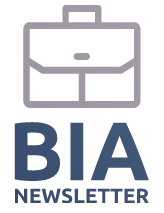
Business
Information
Architecture
Helping you understand your business better
- July 10, 2020
- Vol. 1 Series 10 Art. 2
Choosing The Right Mix
A previous article described the importance of driving a project with the proper mix of methods, tools and techniques. A method is similar to a recipe. A tool is an instrument that you work with. And a technique is an effective way to use the tool. In this article, we explore the application of these elements to business architecture – one of four architectures that control the outcome of system development.
There are many dynamic forces that may block or transform the business architecture in not so desirable ways. The goal of a business architecture is to ensure that the enterprise’s operations and projects are lining up with business strategy. This way business leaders are able to manage changes that affect the organization’s future more efficiently. The business architecture is considered essential for the following reasons:
- It is a blueprint of an enterprise in terms of its business capabilities, governance, key processes and overall information.
- It can be visualized, analyzed and simulated.
- It is part of a larger context called the Enterprise Architecture (all of the four architectures grouped together as one).
Certain questions can be answered by a well-structured business architecture. Is the business able to be transformed into a customer-focused business model? Are our information gathering efforts keeping up with new regulatory compliance? What types of legacy data can’t be converted over to the new system? To facilitate the decision-making process, business architects have partitioned the architecture into domains.
The following Business Architecture Model from Capstera shows six domains:
The benefit gained from the business architecture is derived from the aspect of traceability. By this is meant that the implications of changes in business operations (e.g. decision to drop a product) can be traced back to any one of those domains (e.g. change in business strategy). Conversely, the downstream impact on data as well as IT systems can immediately be known. That’s a huge benefit since impacts like costs for system upgrades can be estimated up front even before the decision is made. No need for guesswork.
Now back to methods, tools and techniques – the subject of this article. At UIMSystems, we use three basic tools for maintaining the business architecture. The specific brands we use are not important at this time. Some tools we use are homegrown. Instead, let’s focus on how those tools are used and what are the reasons why they are used.
The three basic tools that enable us to maintain the business architecture are: a tool for modeling, a change management tool, and a repository.
Let’s begin the discussion from the bottom-up.
A repository is regarded as the database of an integrated development environment. However, instead of actual data it stores metadata (data about data). As such it makes data and for that matter, information, portable. For our purposes, we call data with metadata as an artifact. Artifacts allow us to feed say, information from the business architecture layer to the other layers of the enterprise architecture and vice-versa. In this case, we say the artifact is bi-directional.
We also regard our development methodology as both domain-driven as well as model-driven. Architecture is built from models. Hence, information from models are captured and distributed to all facets of the development environment. It is a symbiotic relationship. The value of a model can be lost very easily when it is out of sync with reality.
Managing change particularly software changes is never easy. It affects the organization in activities like onboarding and adoption. Change information must also be communicated to all stakeholders or even throughout the organization. The problem is exacerbated as no single tool fits all of the needs for change management. To make things easier, we have adopted the concept of a pipeline to manage change. The pipeline is unique as it cuts across all layers of the enterprise architecture.
The discussion of methods, tools and techniques continues in future articles.
Copyright 2020. UIMSystems, Inc. All rights reserved.
UIMSystems is a system development company that takes a holistic, enterprise architecture approach to building systems. Click here to learn more about its complete range of services.